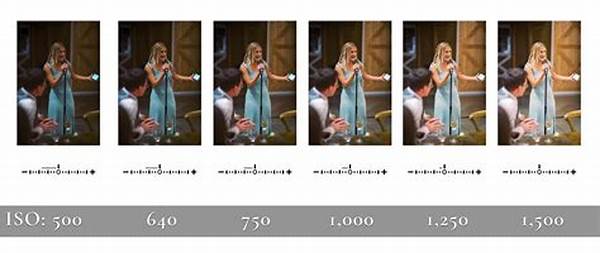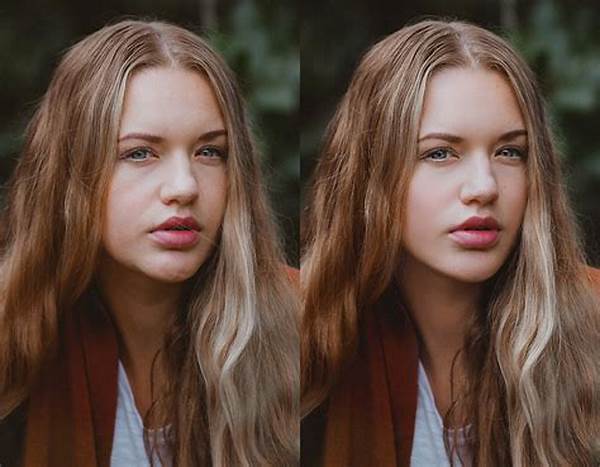Hello there, photography enthusiasts! Let’s talk about something that often gets glossed over when you’re setting out for a nice outdoor portrait session: the ideal ISO levels. Yeah, I know, ISO might sound a bit techy, but once you get the hang of it, you’ll see how crucial it is for getting those perfect shots. When you’re outside, the lighting is forever changing—from bright, sunny days to overcast skies and those magical golden hours. Understanding the ideal ISO levels for outdoor portraits can make or break your photo game. So, let’s dive into how to get that ISO just right.
Read Now : Improve Portrait Focus Accuracy
Choosing the Right ISO for Outdoor Brilliance
When you’re capturing outdoor portraits, the right ISO setting can help balance exposure and preserve detail, making your subjects look stunning. In bright daylight, you can opt for a low ISO like 100 or 200. This keeps noise to a minimum and takes advantage of the abundant natural light. As the light dips—think overcast weather or shade—you might have to bump it up to 400 or 800 to maintain a sharp image without introducing blur from a lower shutter speed. Then there are those magical moments during golden hour or dusk when light is scarce but stunning. In these situations, an ISO of 800 or even 1600 might be necessary to capture the mood without sacrificing detail.
Understanding these nuances can seem daunting at first, but practice is key. Experimenting with different ISO settings while checking the results on your camera’s screen can be an enlightening experience. As you gain confidence, you’ll start to intuitively feel what ISO level works best in varying light conditions, bringing your outdoor portraits to life.
So, the next time you venture out with your camera and the skies shifting from bright to cloudy, remember that ideal ISO levels for outdoor portraits are dynamic. By keeping your ISO nimble—adjusting it according to the lighting situations and the creative effect you wish to achieve—you’ll develop an eye for capturing timeless, beautiful portraits.
Quick Tips on Mastering ISO Outdoors
1. Bright Day = Low ISO: On those crystal-clear days, stick to 100 or 200 to minimize noise.
2. Overcast Choices: Push it up to 400 to maintain clarity when the sun isn’t shining bright.
3. Golden Hour Glow: Between 800 and 1600 to catch those sunset vibes without blur.
4. In the Shade: If you’re in the shadows, up the ISO to balance exposure.
5. Check Your Shots: Always review your photos on-site to tweak as needed for the ideal ISO levels for outdoor portraits.
Understanding ISO’s Impact on Outdoor Photos
Mastering ISO levels isn’t just for tech geeks or professional photographers—it’s a vital skill for anyone who loves taking outdoor portraits. You see, the ideal ISO levels for outdoor portraits directly affect how your images appear in terms of noise and details. ISO simply adjusts your camera’s sensitivity to light. The lower the ISO, the less sensitive it is, which is perfect for bright conditions. This results in clearer images with minimal noise. However, when light becomes scarce, upping the ISO makes your camera more sensitive, which allows for better shots in low light but can introduce noise.
If you’re out capturing memories during an early morning hike or a lively backyard barbecue at dusk, adjusting your ISO levels will ensure the lighting doesn’t ruin your portraits. High ISO settings are often necessary in dim conditions, but modern cameras manage noise well in higher ranges compared to older models. It’s all about finding that sweet spot—balancing the levels to match the available light while preserving the essence and emotion of the moment.
10 Things to Remember About Outdoor ISO
1. ISO Basics: ISO adjusts light sensitivity. Low = less sensitive, High = more.
2. Bright Sun: ISO 100 or 200 keeps noise at bay.
3. Cloudy Moments: Bump it to 400.
4. Sunsets: Perfect time for ISO 800+.
Read Now : Inaudible Audio Watermarking Approaches
5. Shade Issues: Try ISO 800 or 1600.
6. Experiment & Learn: Trial and error are your friends.
7. Camera Models: Different cameras handle high ISO levels in unique ways.
8. Noise Management: Higher ISO can bring noise; some cameras handle it well.
9. Adjust for Movement: Track moving subjects with appropriate ISO and shutter settings.
10. Trust Your Eye: Your judgment on what looks good might defy any rulebook.
Making the Most of Changing Light
Outdoor photography is a blessing and a challenge. With changing light conditions, the ideal ISO levels for outdoor portraits evolve like nature itself. Think of shooting under a clear blue sky with the sun perfectly positioned in the sky. You are comfortably set with your ISO low. Suddenly, the weather morphs—in come those dramatic clouds. What do you do? Quick adjustments on your camera ensure you’re back on the path to capturing crisp and brilliant images.
Those candid moments—catching your friend’s laugh or your sibling’s genuine smile under a treetop’s shadow—are fleeting. The key to good photography lies in the punt of the moment. Being adaptable and fast with adjusting ISO means your photos do justice to the memories you’re preserving. The charm of outdoor photography is in dancing with light. While lighting might feel like an uncontrollable element, your understanding of ISO gives you a ticket to influence the outcome, to demand results that align with your creative vision.
A Guide for ISO Newbies
Hey, no worries if you’re still getting around to this ISO thing. Think of ISO as how loud your camera screams to capture light. Lower ISO? Whispering in broad daylight. Higher ISO? Shouting in dimly lit rooms. Cool, right? Next time you’re outdoors, tinker a bit—adjust those levels and watch your photos transform. Imagine shooting on a sunlit day, your ISO’s at 100, and you’re winning. Clouds roll in, and suddenly, 400 feels more like it. You’re in the groove, managing those ideal ISO levels for outdoor portraits like a pro.
Wrapping It All Up
And there you have it, my fellow shutterbugs! Diving into the world of ISO might seem daunting initially, but it’s an essential stepping stone. When seeking the ideal ISO levels for outdoor portraits, remember: each setting is like a domino. Nudging one can tip another. Practice adjusting ISO based on natural shifts in light. You’ll soon find that sweet spot quickly.
Over time, seeking that balance becomes second nature. Your confidence grows, just like your collection of stunning outdoor portraits. So grab your camera, step outside, and witness how these small tweaks can transform your photography journey into an art. Remember, it’s not just about anticipating the light but knowing how to accompany it with your skillful adjustments.



